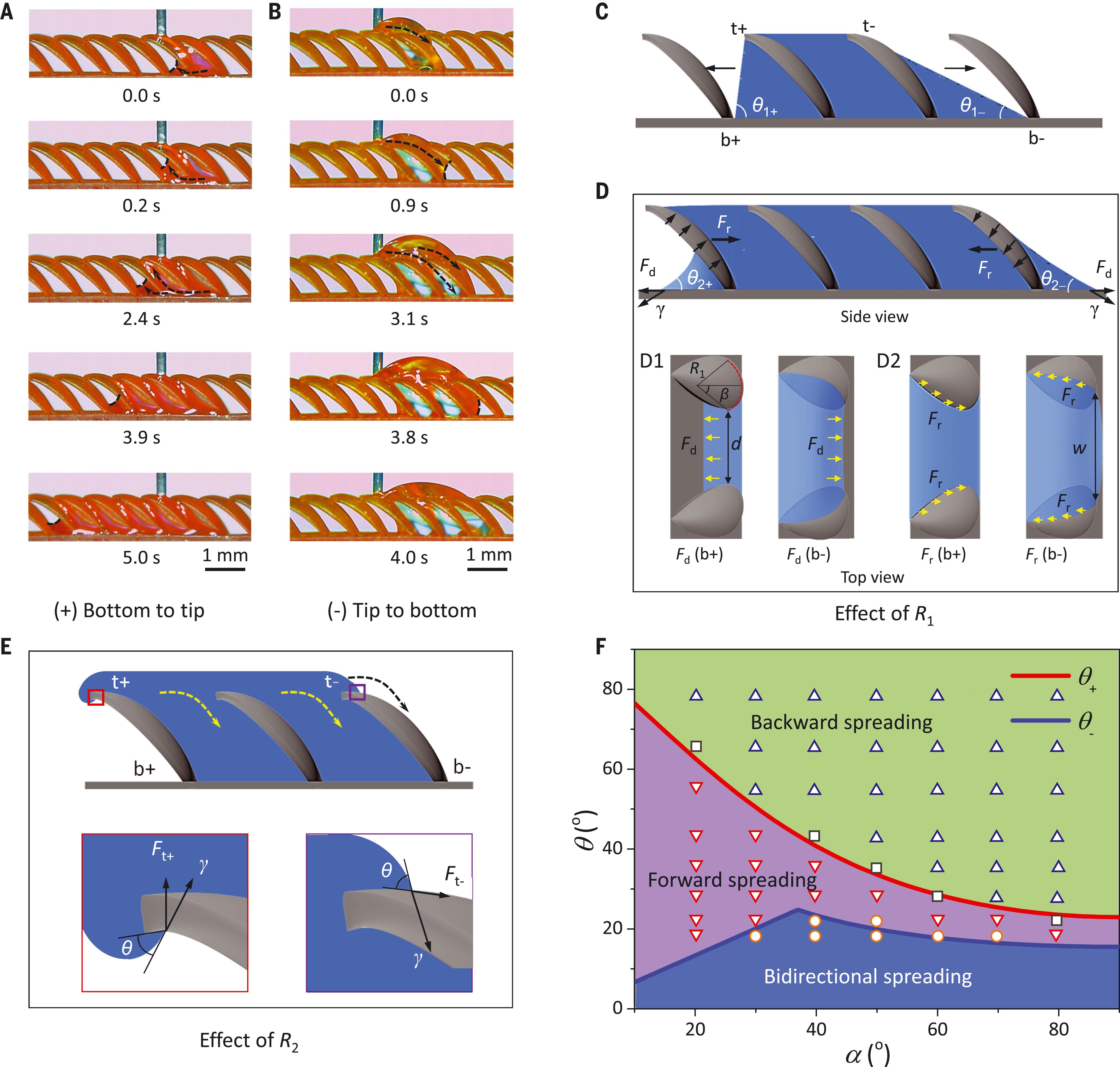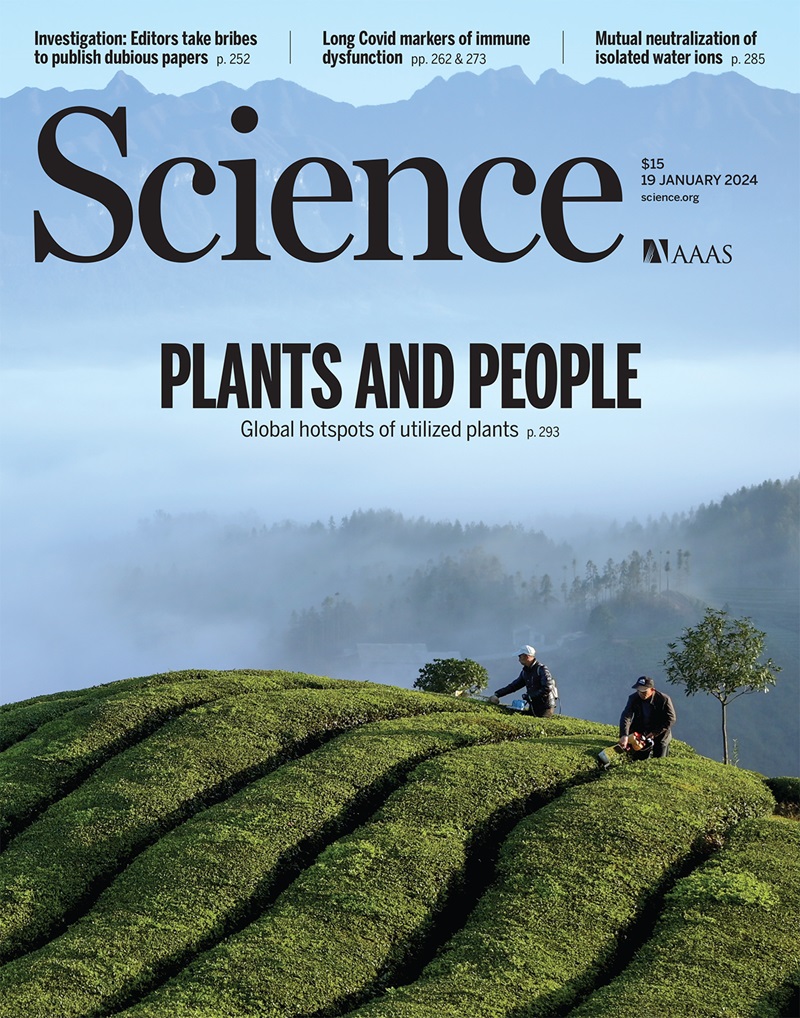Three-dimensional capillary ratchet-induced liquid directional steering
IF 44.7
1区 综合性期刊
Q1 MULTIDISCIPLINARY SCIENCES
引用次数: 166
Abstract
Conventional understanding has it that a liquid deposited on a surface tends to move along directions that reduce surface energy, which is mainly dictated by surface properties rather than liquid properties, such as surface tension. Achieving well-controlled directional steering remains challenging because the liquid-solid interaction mainly occurs in the two-dimensional (2D) domain. We show that the spreading direction of liquids with different surface tensions can be tailored by designing 3D capillary ratchets that create an asymmetric and 3D spreading profile both in and out of the surface plane. Such directional steering is also accompanied by self-propulsion and high flow velocity, all of which are preferred in liquid transport.

三维毛细管棘轮诱导液体定向转向
按照传统的理解,沉积在表面上的液体往往会沿着降低表面能的方向移动,而表面能主要由表面特性而非液体特性(如表面张力)决定。由于液固相互作用主要发生在二维(2D)领域,因此实现良好的方向引导仍具有挑战性。我们的研究表明,可以通过设计三维毛细管棘轮来调整不同表面张力液体的扩散方向,从而在表面平面内外形成不对称的三维扩散轮廓。这种定向转向还伴随着自推进和高流速,所有这些都是液体运输中的首选。
本文章由计算机程序翻译,如有差异,请以英文原文为准。
求助全文
约1分钟内获得全文
求助全文
来源期刊

Science
综合性期刊-综合性期刊
CiteScore
61.10
自引率
0.90%
发文量
0
审稿时长
2.1 months
期刊介绍:
Science is a leading outlet for scientific news, commentary, and cutting-edge research. Through its print and online incarnations, Science reaches an estimated worldwide readership of more than one million. Science’s authorship is global too, and its articles consistently rank among the world's most cited research.
Science serves as a forum for discussion of important issues related to the advancement of science by publishing material on which a consensus has been reached as well as including the presentation of minority or conflicting points of view. Accordingly, all articles published in Science—including editorials, news and comment, and book reviews—are signed and reflect the individual views of the authors and not official points of view adopted by AAAS or the institutions with which the authors are affiliated.
Science seeks to publish those papers that are most influential in their fields or across fields and that will significantly advance scientific understanding. Selected papers should present novel and broadly important data, syntheses, or concepts. They should merit recognition by the wider scientific community and general public provided by publication in Science, beyond that provided by specialty journals. Science welcomes submissions from all fields of science and from any source. The editors are committed to the prompt evaluation and publication of submitted papers while upholding high standards that support reproducibility of published research. Science is published weekly; selected papers are published online ahead of print.
 求助内容:
求助内容: 应助结果提醒方式:
应助结果提醒方式:


